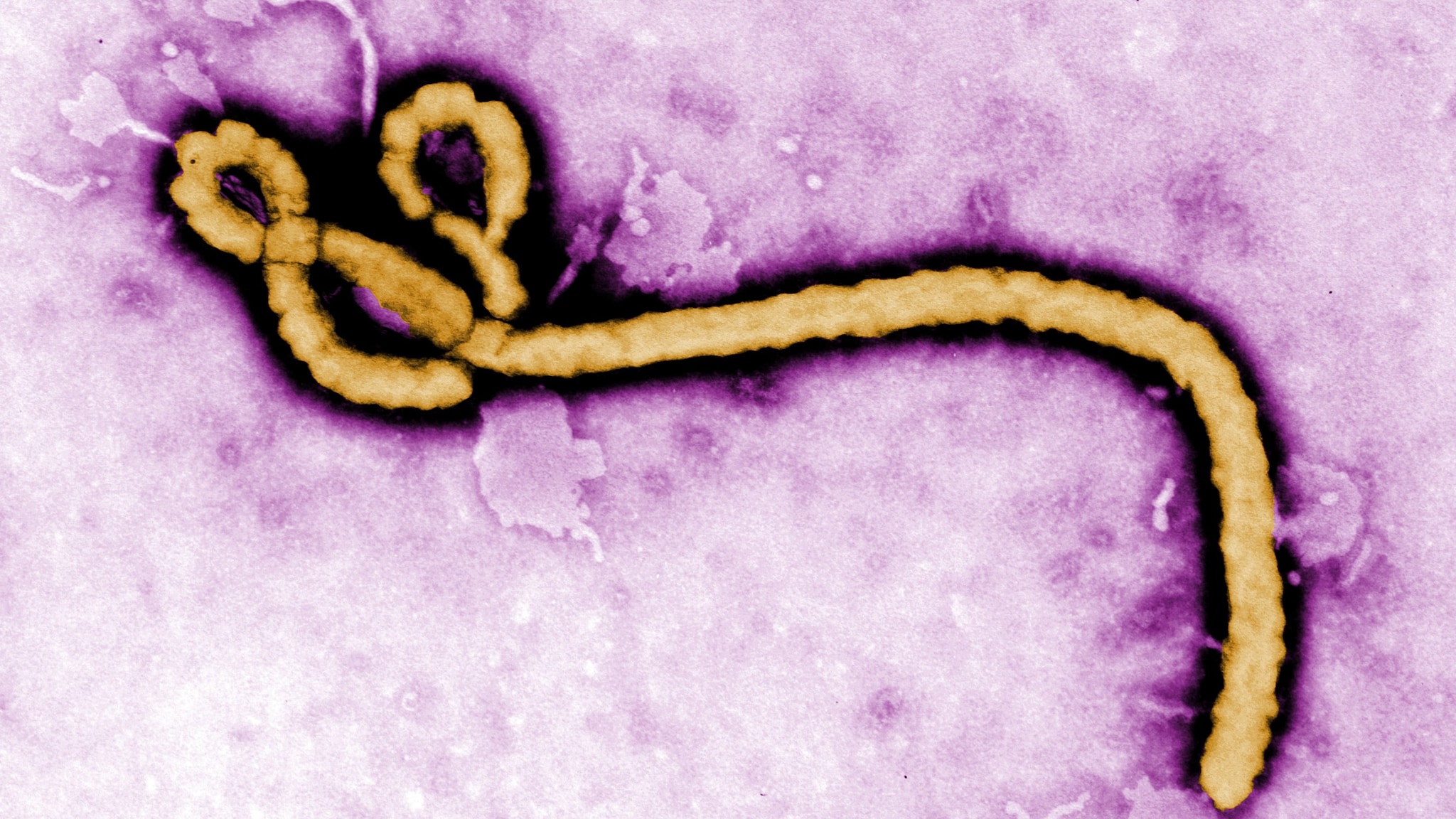Key points
- Ebola disease is caused by an infection with an orthoebolavirus.
- Orthoebolaviruses are found primarily in sub-Saharan Africa.
- Orthoebolaviruses can cause serious and often deadly disease, with a mortality rate as high as 80 to 90 percent.
- There is an FDA-approved vaccine for the prevention of Ebola virus (species Zaire orthoebolavirus).

What it is
Ebola disease is caused by a group of viruses, known as orthoebolaviruses (formally ebolavirus)1. These viruses can cause serious illness that, without treatment, can cause death. Orthoebolaviruses were discovered in 1976 in the Democratic Republic of the Congo and are found primarily in sub-Saharan Africa.
Types
There are four orthoebolaviruses that cause illness in people:
- Ebola virus (species orthoebolavirus zairense) causes Ebola virus disease.
- Sudan virus (species orthoebolavirus sudanense) causes Sudan virus disease.
- Taï Forest virus (species orthoebolavirus taiense) causes Taï Forest virus disease.
- Bundibugyo virus (species orthoebolavirus bundibugyoense) causes Bundibugyo virus disease.
Some orthoebolaviruses do not cause illness in people. Reston virus (species Orthoebolavirus restonense) can cause illness in nonhuman primates and pigs. Bombali virus (species Orthoebolavirus bombaliense) was identified in bats, but scientists don't know if it causes illness in animals or people.
Signs and symptoms
People with Ebola disease may experience "dry" symptoms early in the course of illness. These symptoms may include fever, aches, pains, and fatigue. As the person becomes sicker, the illness typically progresses to "wet" symptoms and may include diarrhea, vomiting, and unexplained bleeding.
How long it takes for signs to show
Someone with Ebola disease may start getting sick 2 to 21 days after contact with an orthoebolavirus. However, on average, symptoms begin 8 to 10 days after exposure.
Risk factors
Healthcare providers and family members caring for someone with Ebola disease without proper infection control methods have the highest risk of infection.
The viruses that cause Ebola disease pose little risk to travelers or the general public.
How it spreads
People can get Ebola disease through contact with the body fluids of an infected sick or dead person. Rarely, some people can get the disease from contact with an infected animal, like a bat or primate.
Prevention
When living in or traveling to regions where viruses that spread Ebola disease may be present, protect yourself from Ebola disease.
Avoid contact with:
- Blood and body fluids, like urine, feces, saliva, sweat, vomit, breast milk, amniotic fluid, semen, and vaginal fluid from people who are sick.
- Semen from someone who has recovered from Ebola disease, until testing shows that the virus is no longer in the semen.
- Clothes, bedding, needles, medical equipment, or other items that may have touched an infected person's blood or body fluids.
- The body of someone who is suspected or confirmed to have had Ebola disease (such as during a funeral or burial practices).
- Bats, forest antelopes, primates, and blood, fluids, or raw meat from these or unknown animals.
Wear protective equipment if you come in contact with people who are sick or have died from Ebola disease, their blood and bodily fluids, or objects covered with their blood or body fluids.
If you return from an area with an ongoing Ebola outbreak, monitor your health for 21 days. Seek medical care immediately if you develop symptoms of Ebola disease.
Ebola Vaccine
The U.S. Food and Drug Administration has approved ERVEBO® for the prevention of Ebola disease (species Orthoebolavirus zairense only). Vaccination is recommended for U.S. adults 18 years and older who are at potential risk of exposure to the Ebola virus.
Testing and diagnosis
Healthcare providers use polymerase chain reaction (PCR) testing to diagnose Ebola disease. Healthcare providers can also test for orthoebolavirus antibodies.
Someone being tested for Ebola disease should be separated from other people in a healthcare facility until results are confirmed.
Treatment
Two FDA-approved treatments2 are currently available to treat an Ebola virus (species orthoebolavirus zairense) infection: Inmazeb™ and Ebanga™.
Supportive care:
Patients have a much better chance of surviving Ebola infection if they receive:
- Fluids and electrolytes (body salts) by mouth or into their veins.
- Medicine to support blood pressure, reduce vomiting and diarrhea, and to manage fever and pain.
- Treatment for other infections, if they occur.
- 1 In an effort to decrease confusion of genus, species, and virus names, the International Committee on Taxonomy of Viruses (ICTV) changed the genus name Ebolavirus to Orthoebolavirus. Genus: Orthoebolavirus | ICTV
- 2 Disclaimer: The mention of any product names or non-United States Government entities on CDC Ebola websites is not meant to serve as an official endorsement of any such product or entity by the CDC, the Department of Health and Human Service, or the United States Government.
